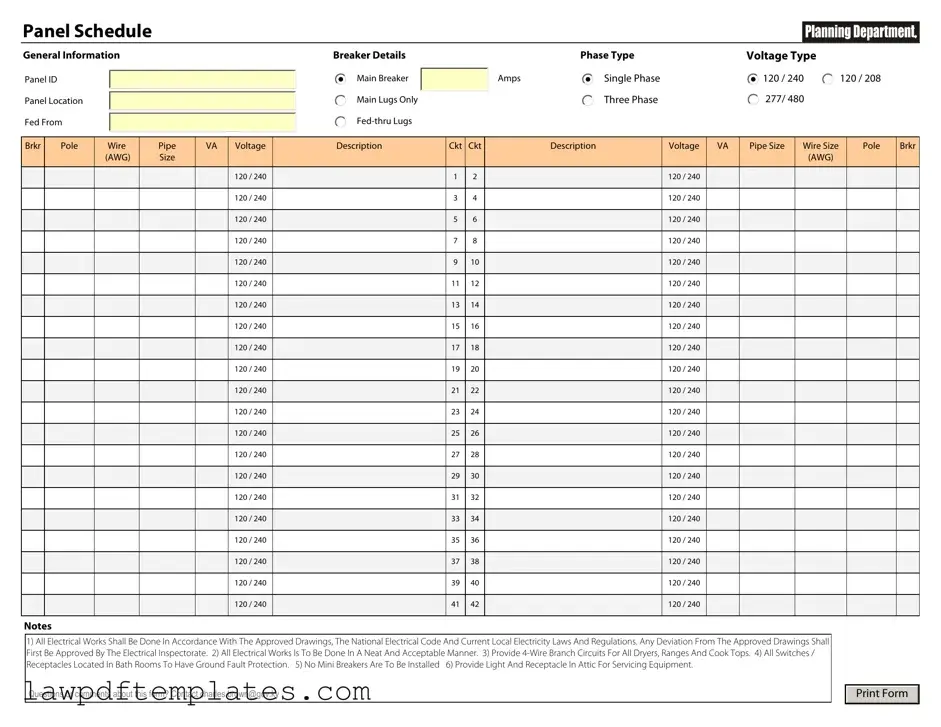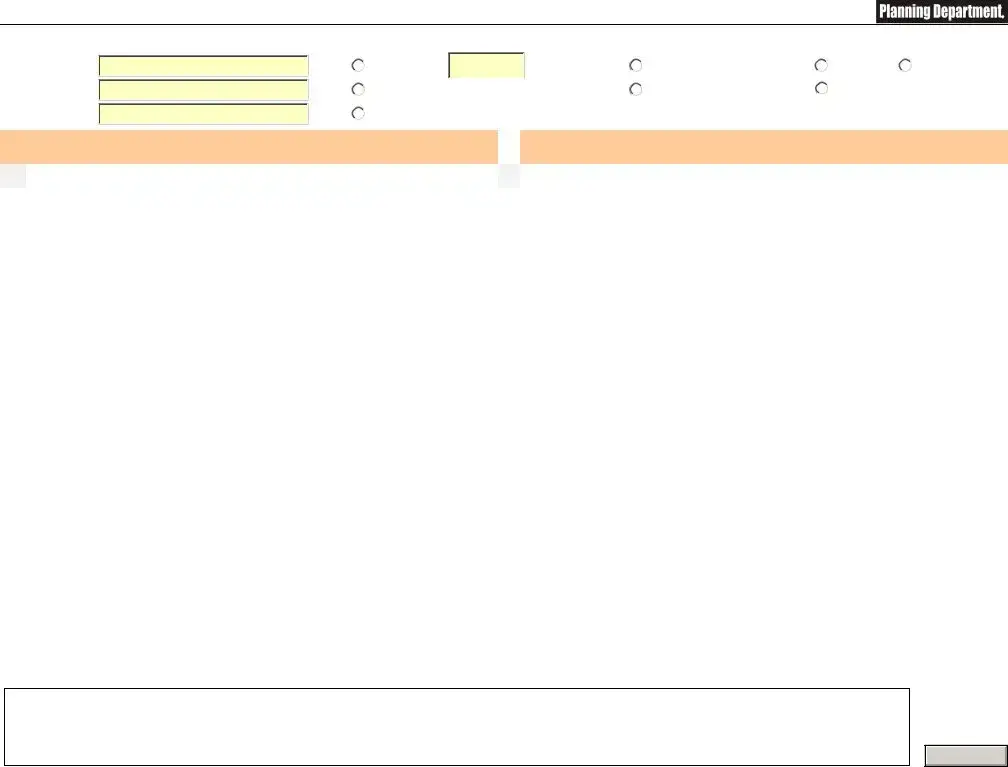Filling out the Electrical Panel Schedule form can be a straightforward task, but mistakes often occur that can lead to confusion or delays. One common error is not including all necessary information. Each section of the form is designed to capture specific details about the electrical system. If any part is left blank, it can hinder the review process.
Another frequent mistake is using incorrect or inconsistent terminology. Electrical terms should be used accurately to ensure clarity. For instance, mixing up terms like "breaker" and "fuse" can lead to misunderstandings about the electrical system's configuration.
People sometimes fail to double-check the calculations provided on the form. Ensuring that amperage and voltage ratings are accurate is crucial. An error in these numbers can result in safety hazards or equipment failures down the line.
Inadequate labeling is another pitfall. Each circuit should be clearly labeled to indicate its purpose. When labels are vague or missing, it complicates maintenance and troubleshooting efforts later on.
Some individuals neglect to update the form when changes are made to the electrical system. It’s important to keep the schedule current to reflect any modifications, such as the addition of new circuits or equipment. An outdated form can lead to incorrect assumptions about the system's capacity.
Additionally, people often overlook the need for signatures or approvals. Certain forms may require validation from a licensed electrician or a supervisor. Without these signatures, the document may not be considered valid.
Another mistake is not following the specific format required for the form. Different jurisdictions may have unique guidelines for how information should be presented. Failing to adhere to these can result in rejection of the form.
Lastly, individuals may forget to include supporting documents. Sometimes, additional paperwork is necessary to provide context or verification for the information submitted. Omitting these documents can delay the approval process.

